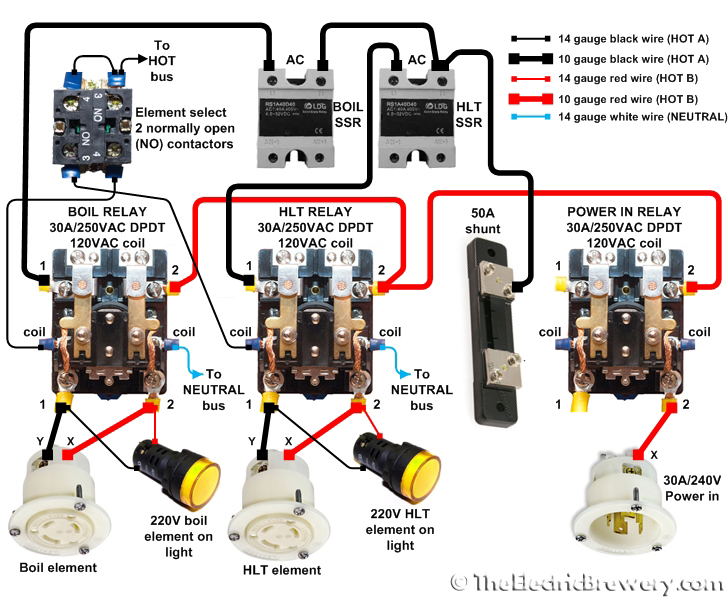sandyeggoxj
Well-Known Member
Leakage sounds somewhat gross, unless you are sick and twisted and then it probably sounds yummy. Anyway...
So I have been putting together parts for my 1/2bbl eherms build and I need to order the rest of the stuff for the control panel. From what I understand SSRs have some sort of current leakage. It has something to do with the solid state switching mechanism and it is inherent to the design. That is the reason that people use contactors on the heating elements. The contactors provide a safety factor because they mechanically open or close the circuit. Once closed the SSR can handle all the requirements of the PID or BCS/BT.
Here are my questions:
1. Why not use a high-current rated switch to replace the contactor?
2. Why don't people use contactors on the pump SSRs?
3. Why don't SSRs exist that do not have current leakage?
4. Can one of these switches handle (2) contactors, or can (1) contactor be used for (2) heating elements? Or do I have to have (1) contactor per heating element, always?
5. Are these just Best Practices or are they UL or NEC requirements?
So I have been putting together parts for my 1/2bbl eherms build and I need to order the rest of the stuff for the control panel. From what I understand SSRs have some sort of current leakage. It has something to do with the solid state switching mechanism and it is inherent to the design. That is the reason that people use contactors on the heating elements. The contactors provide a safety factor because they mechanically open or close the circuit. Once closed the SSR can handle all the requirements of the PID or BCS/BT.
Here are my questions:
1. Why not use a high-current rated switch to replace the contactor?
2. Why don't people use contactors on the pump SSRs?
3. Why don't SSRs exist that do not have current leakage?
4. Can one of these switches handle (2) contactors, or can (1) contactor be used for (2) heating elements? Or do I have to have (1) contactor per heating element, always?
5. Are these just Best Practices or are they UL or NEC requirements?



